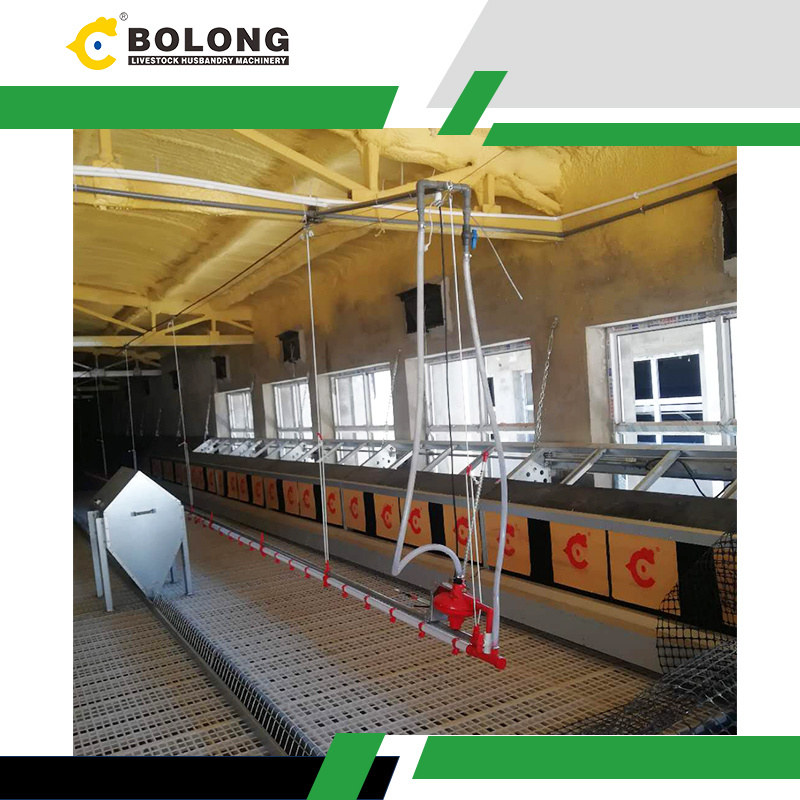Installation of the automatic egg collector-A complete guide to get started easily
With the rapid development of modern agriculture and the advancement of the scale of breeding industry, automatic egg collectors are more widely used in the breeding industry. As an automated equipment that can effectively improve the efficiency of egg collection and save labor costs, the automatic egg collector has been well received by users. This article will introduce in detail how to install the automatic egg collector, covering preparation work, installation steps, debugging and testing, and solutions to common problems. I hope it can provide a certain reference value for the use of your automatic egg collector.
1. Preparation before installing the egg collector
Before installing the automatic egg collector, make sure to do the following preparations:
① Check the equipment
Before installing the equipment, we must first conduct a comprehensive inspection of the equipment. Confirm whether the accessories of the automatic egg collector are complete, and ensure that all parts of the equipment are intact.
② Choose a suitable site
Before installation, it is necessary to determine the installation location according to the installation method and size of the automatic egg collector. In addition, it is worth noting that the automatic egg collector should be avoided in a humid or dusty environment to avoid affecting the normal operation of the equipment.
③ Check the power supply
Before installation, it is necessary to ensure that there is a suitable power supply in the chicken house. Check whether the power supply meets the voltage requirements of the equipment and ensure that the power supply line is safe and reliable.

2. Detailed steps for installing the egg collector
① Install the bracket and guide rail
The first step of the installation is to correctly install the bracket and guide rail of the egg collector equipment. Usually, it should be fixed on the wall or ceiling of the chicken house to ensure that the bracket is installed at a suitable height to ensure that the eggs can roll smoothly into the conveyor belt of the egg collector.
② Install the conveyor belt
Next, you need to connect the conveyor belt to the guide rail. During the installation process, you need to ensure that it is smooth and unobstructed and the tension of each conveyor belt needs to be uniform to prevent skipping or blocking.
③ Connect the motor and control system
The motor is the core component that drives the conveyor belt. When installing the motor into the egg collector system, you need to ensure that the motor is tightly connected to the egg collector conveyor belt. After the motor power cord is firmly connected, connect the control panel or control system according to the product manual.
④ Install the egg collection box
After completing the above installation steps, you need to install the egg collection box. The egg collection box is usually located at the end of the egg collection system. When installing it, make sure that the egg collection box is stable and easy to remove. The position of the egg collection box should ensure that it can fully receive all the eggs conveyed.

3. Egg collector debugging and testing
① Power-on test
After installation, the motor needs to be turned on to test whether the equipment can operate normally. Then the control system needs to be started to check whether the conveyor belt can run smoothly.
② Simulation operation scenario
Use the egg model to simulate the situation of real eggs, and observe whether the eggs can roll into the conveyor belt smoothly and be smoothly sent to the egg collection box through the conveyor belt. During the simulation, check whether the conveyor belt has problems such as jamming and jumping.
4. Solutions to common problems in egg collector installation
① Conveyor belt jamming
It may be caused by the conveyor belt being too loose or improper installation. In this case, we first need to check the tension of the conveyor belt to ensure that the conveyor belt is installed tightly and smoothly. If it is caused by improper installation, readjust the position of the guide rail and conveyor belt to ensure that it runs smoothly.
② Motor cannot start
If the motor cannot start, there may be a problem with the power connection. First check whether the power cord is firmly connected. If the power supply is normal, check whether the setting of the motor control system is correct.

Through reasonable installation and debugging, the automatic egg collector can effectively improve the efficiency of egg collection during normal operation, while reducing labor costs for farmers and bringing higher economic benefits to users. If you have any questions about the automatic egg collector, please feel free to contact us. We have a professional technical team ready to serve you at any time!